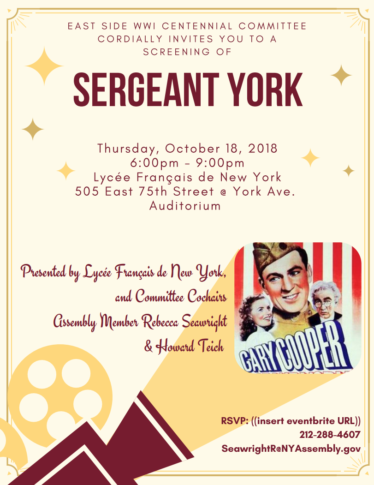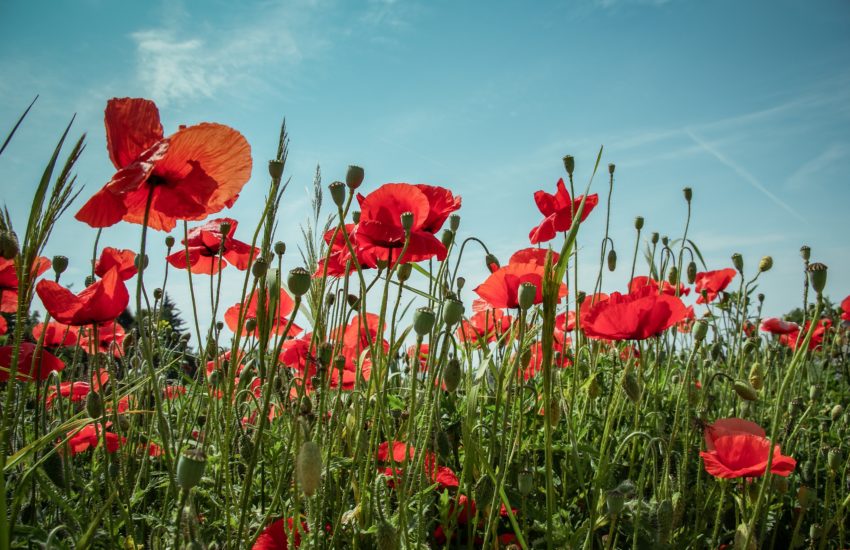At 11:11 on 11/11 (November 11) 1918, in a rail car in Compiègne, France and Germany signed the armistice that would end “the Great War,” or as we more commonly know it, World War I. In Europe, signs of World War I are more abundant than in the United States: it is commemorated on Armistice Day, and many people wear red poppies, the symbol of remembrance. Cities and towns honor those who gave their lives in ceremonies, especially at the numerous monuments.

In the United States, we observe Veterans’ Day on November 11 as a way to honor all of the men and women who served in the various branches of the armed services, whether they saw combat or a theatre of war or not. The number of living World War II veterans is thinning out with the passage of time. Now, we focus more on those who served in Korea, Vietnam, Iraq and Afghanistan. World War I has receded into our distant memory. Indeed, World War I for most Americans is something they studied in school, less central, important, and definitive to our history than World War II.
To many historians, this is not the most accurate way to look at the Great War. The participation by the United States lasted for just over a year and a half. President Woodrow Wilson declared war on Germany on April 6, 1917, two and a half years after the conflict began. The effects would be much longer-lasting. Those who think that World War II was more important would be wise to consider just some of what the Great War engendered:
- German bitterness over the provisions of the Versailles Treaty (including harsh reparations and the “War Guilt Clause,” in which Germany was required to accept responsibility for starting the war and causing all of the damage) contributed to the rise of Adolf Hitler, the subsequent re-armament and ultimately, World War II.
- The break-up of several empires, including the Ottomans, Germany, Austria-Hungary, and Russia.
- Russian weakness in World War I which contributed to the Russian Revolution. The monarchy was overthrown and the Bolsheviks were victorious. In time, this would make Stalin’s rise to power possible and contribute to the advent of the Cold War.
- New weaponry, including chemical weapons, that changed modern warfare.
- New roles for women, who had proven their abilities to run businesses as well as the homefront while men were off fighting. As a result, women were given the vote in the U.K. and the United States.
Unquestionably, World War I shaped the remainder of the twentieth century and created many of the political realities and global conflicts still present in the twenty-first century.
As a history teacher, I find teaching World War I one of the most interesting units of Première. I became a history teacher because the stories of people, their motivations, and the effects of their actions and decisions are so rich and meaningful; I am also fascinated by the way individuals and nations choose to construct their histories and privilege the terms in which they would like to be remembered. This is why I wrote my doctoral dissertation on how the New England Puritans wrote their own histories and shaped the way they wanted later generations to regard them. History and memory are a big part of how I teach the World War I unit.

In particular, we focus on what drew people into the war, that is, the narrative that was created to entice millions of (mostly) young men to leave their homes and fight a deadly war. Erich Maria Remarque’s classic 1929 novel, All Quiet on the Western Front and the 1930 movie, is an especially powerful way of showing how high school students, only a year older than the premieres, were convinced by their history teacher to join to fight for the fatherland. Poems provide a vivid glimpse at the horrors of war. John McCrae’s “In Flanders Fields” (1915) conveys this sense better than any other. Finally, we look at various memorials, focusing in particular on those in France. Many students share the monuments of those they have seen in their families’ towns and villages. We analyze what they mean and why the designer chose the symbols and motifs they did. We also look at how Germany chose to commemorate their war dead, discussing how a country on the losing side and carrying so much bitterness can honor those who gave their lives.
Studying World War I reminds us of the connection between France and the United States. Indeed, the help offered by the French in the American Revolution over a century earlier was not forgotten. The famous quote, “General Lafayette, nous voilà,” (“General Lafayette, we are here”) has been erroneously attributed to General Jack Pershing, but now historians believe that it was uttered by Colonel Charles Stanton.
The centennial of the armistice is an ideal time not only to honor those who gave their lives but also to reflect on what we can learn from the lessons of the terrible Great War.
About the Author :
Rachelle Friedman, who started teaching at the Lycée in 2003, was born and raised in Los Angeles. She earned her bachelor’s, master’s, and Ph.D. in history at UCLA. Before coming to the Lycée, she taught at Harvard University, Milton Academy, and the Fieldston School. At the Lycée, she is the debate coach and co-advisor of the Harvard Model Congress. When not at school, she enjoys going to the gym, reading, cooking, and knitting.


